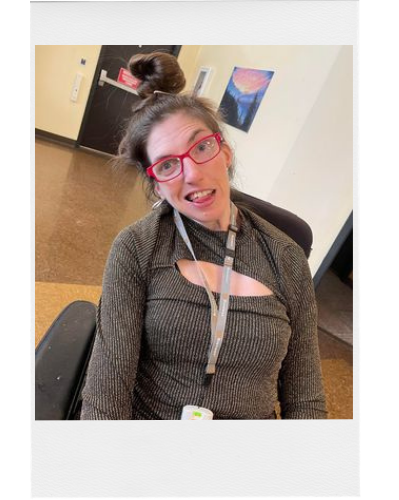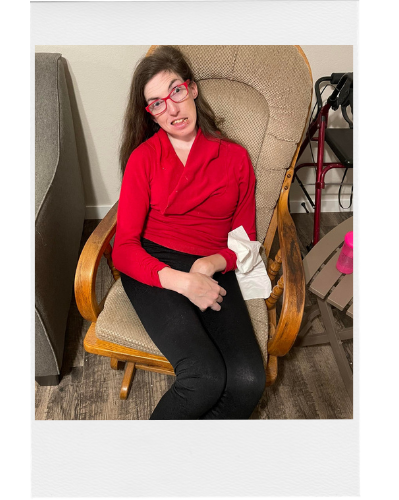Lindsay is kind and humorous. Her favorite movie is Tombstone. She loves theme parks and time with her family. She also has type 3 GM1 Gangliosidosis. This is the rarest form of GM1 and has the latest onset, typically occurring before age 30. Lindsay’s progression fit the mold. She was just beginning her adult life when her symptoms began. It took a decade for her to fully understand why they existed and the full impact they would have on her.


Her obvious problems began in spring 2006, when Lindsay was a sophomore in university. She was living a normal, independent life when some small things started, spasms mainly. But the spasms grew worse and unpredictable enough that she became unable to focus on school. Lindsay was forced to withdraw from college to focus on her health.
She went to the best facilities she and her family could find near where they live in Wisconsin, including the Mayo Clinic and the University of Minnesota. Still, it took a long while to find someone who could help. At last, in St. Paul, they found a neurologist. He didn’t know what was wrong, but he was able to tell them something concrete: Lindsay’s would be a lifelong issue. For her and her family, this wasn’t anything they wanted to hear, but it was nice to know what they were dealing with.
More years passed, and with them a long journey through the medical labyrinth. Throughout, Lindsay’s symptoms worsened. At first it was her legs and a decreasing ability to walk. She had to use a walker, then transitioned to a wheelchair. Then, other abilities most people take for granted began to diminish. Her ability to swallow was one, the disappearance of which eventually necessitated a feeding tube. Her ability to speak followed.
These losses are not just physical. They are existential. Imagine facing the rest of your life, and knowing you will lose independence, agency, and the ability to function and socialize as everyone else does. Lindsay has to live through that. To lose those aspects of life is and was near unbearable. Just as she mourned the loss of a certain ability and adapted, then came another one and its mourning, then another.
In and amongst it were more doctors, more testing. What seemed like an endless search, until they came across a young neurologist, who decided to order extensive genetic testing. The first wave didn’t find any matches. But they did another round, and in May 2016–after ten years–there was a match. GM1 Gangliosidosis type 3, adult onset.


Type 3 is incredibly rare, especially in the United States, and it is thought to primarily occur in the Japanese population. At one point Lindsay and her family only knew of one other woman with it in the entire country. Likely more people have it, but have not found the diagnosis. And a diagnosis is important. With a proper one, you can get certain medications and interventions that help navigate the disease. You can find support groups and organizations working to find treatments.
“Medicine is getting better at diagnosis,” Lindsay’s dad says. “Part of what helps that is more information getting out, and more people learning what GM1 Gangliosidosis is. The more research the better.”
According to him, there are some positive things to come out of all this. The University of Minnesota is testing gene-editing in mice with GM1. Someday, Lindsay would love to participate in a clinical trial. Other human trials are taking place all over the world for the the infantile and juvenile forms of GM1. The hope is that someday, there will be treatments for all those suffering from GM1, including Lindsay.

Lindsay’s takeaway after all this:
“Day to day, when you live with disabilities, it helps to appreciate what you have.”
To learn more about Lindsay, watch her and her dad discuss her journey below.
Help Lindsay and the GM1 community. Donate to fund research toward treatments and a cure for GM1 gangliosidosis.
